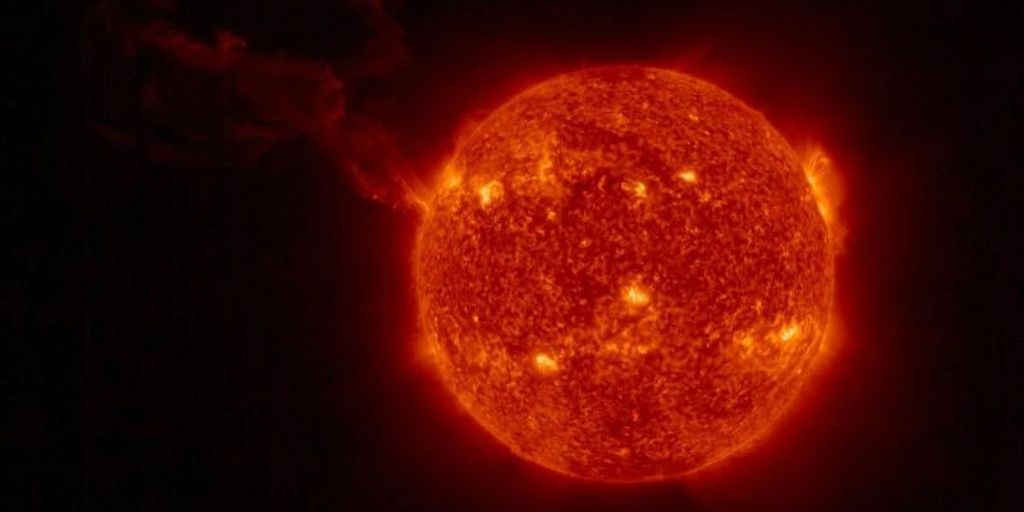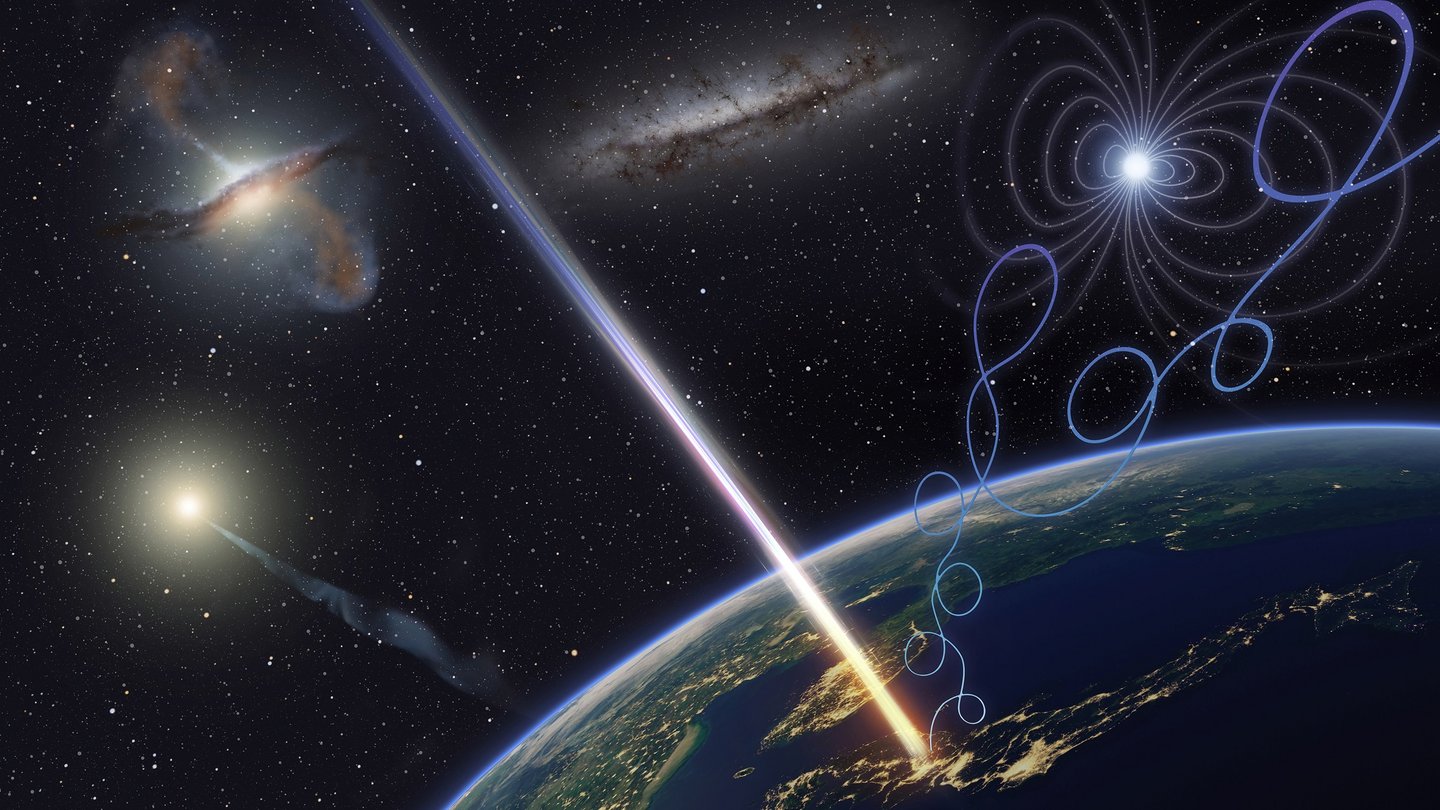Day after day, particles from space rain down on our Earth. Above all, they come from our solar system, but even the smallest particles from foreign galaxies rarely hit our home planet. In the specialized journal Science, researchers now report on how they discovered a particularly mysterious, high-energy particle.
High-energy particles coming from space are small particles that make up atoms. These include protons or atomic nuclei that originate outside our galaxy. Researchers hypothesize that they arise from the most energetic phenomena in the universe, such as gamma-ray bursts or relativistic jets from black holes. When such a high-energy particle enters Earth’s atmosphere from space, it collides with molecules in the air. This results in what is called an air shower: an avalanche-like phenomenon in which more molecules are created, which then interact with the following air molecules and produce other molecules again. Using these particles, researchers can draw conclusions about the original particle that triggered the volley.
A massive detector array that measures rare particles
But no matter how many times particles hit the Earth, extremely high-energy particles are rare. The researchers estimate that every square kilometer of Earth is hit by less than a single particle at more than 100 exaelectronvolts per century – more than a million times the energy of protons produced at CERN’s Large Hadron Collider. If you want to measure such particles, you need a large detector.
High energy particle beam
Launching an air volley through high-energy particles
That’s why Toshihiro Fujii’s team at Osaka Metropolitan University used the Telescope Array experiment in Utah to search for high-energy particles. It consists of three telescopes and more than 500 detectors distributed over an area of 762 square kilometers. This makes it roughly the size of the city of Hamburg. The researchers were lucky: the particle they discovered had an energy of 244 eV.
Characteristics and origin remain mysterious
But when Fujii and his team wanted to take a closer look at the particle’s properties, they ran into several problems: First, they couldn’t determine exactly what type of particle it was. Because the moonlight seemed too bright to use the necessary telescopes. They could only conclude that it was a proton or a heavier atomic nucleus: the muons were created in this air shower. Muons are elementary particles like electrons and are usually a byproduct when protons or other atomic nuclei collide with molecules in the Earth’s atmosphere.
On the other hand, the particle’s origin is also a mystery: there are only very few galaxies in the direction from which it came. According to Fujii and his team, it is possible that this particle was deflected more strongly by the Milky Way’s magnetic field than theoretical models predict, or that the origin of the particle is a previously unknown astronomical object. However, they want to continue the search for high-energy particles using the Telescope Array experiment in order to clarify the origin of this high-energy particle and, if necessary, improve basic models for the future.

“Tv expert. Hardcore creator. Extreme music fan. Lifelong twitter geek. Certified travel enthusiast. Baconaholic. Pop culture nerd. Reader. Freelance student.”






More Stories
More powerful solar storms are expected by astronomers
What fool's gold reveals about early life – berry-like pyrite crystals only arise from biogenic precursors
Russian Foreign Language – National Competition: Second place goes to a student from Brucker HAK